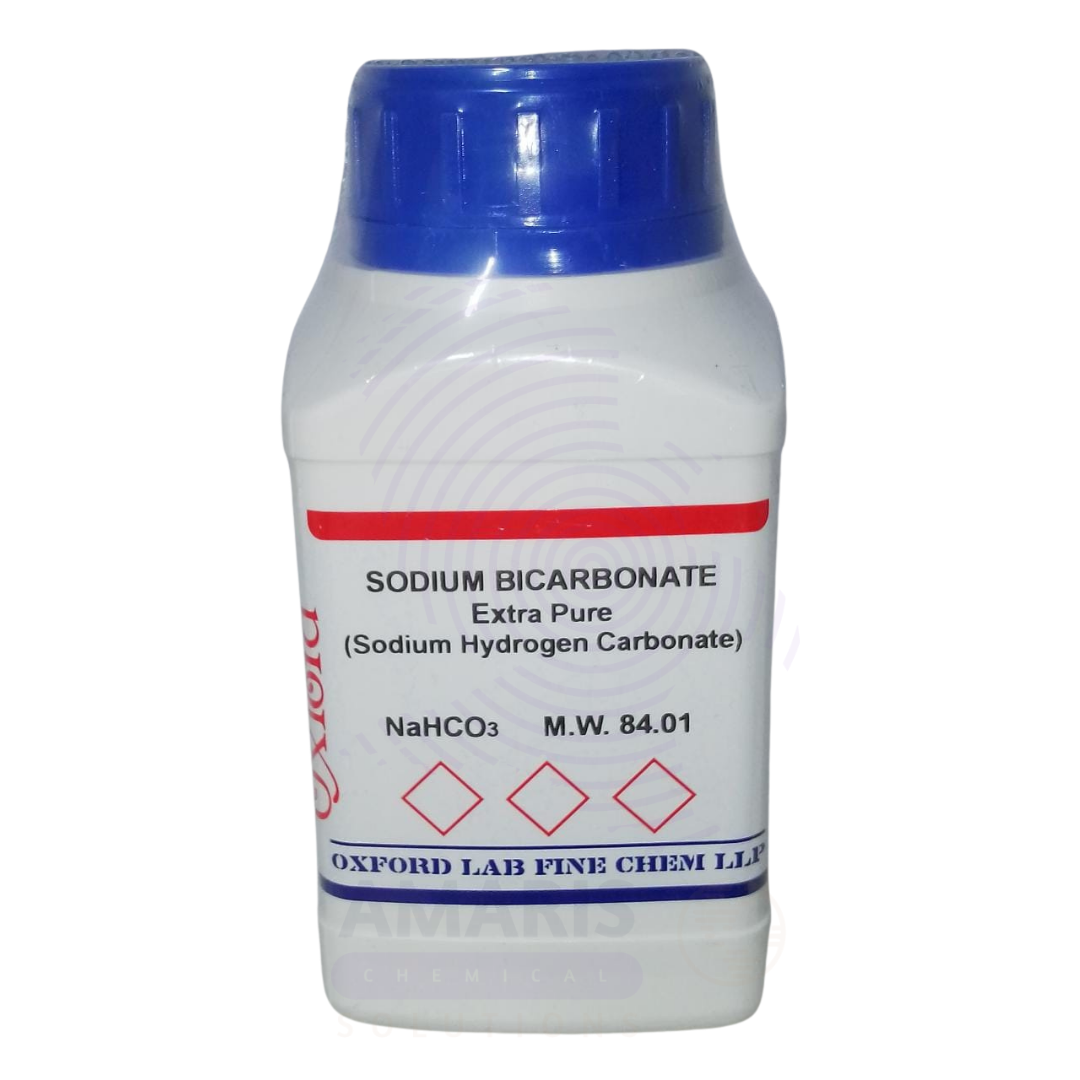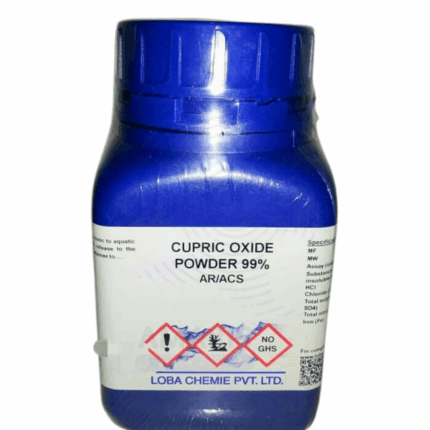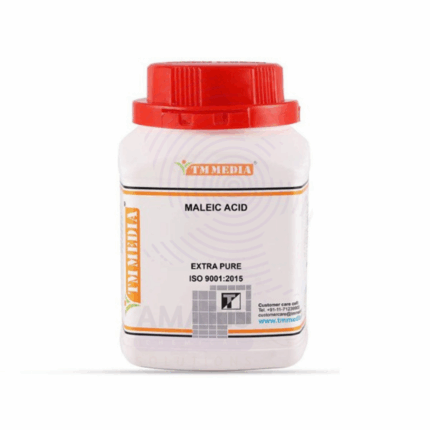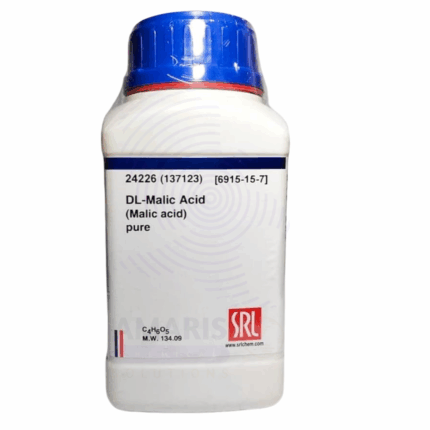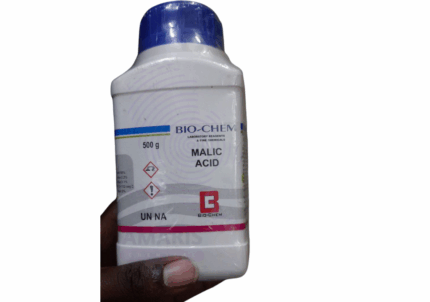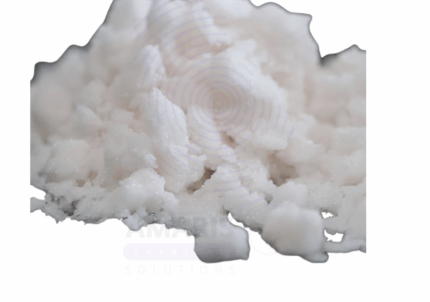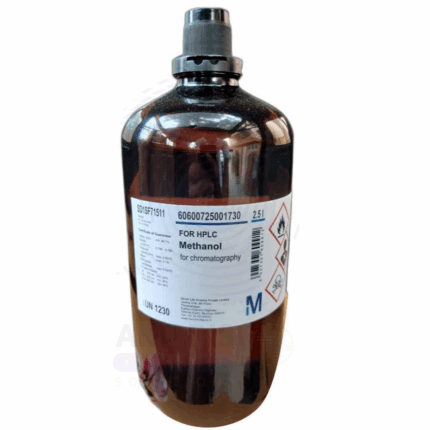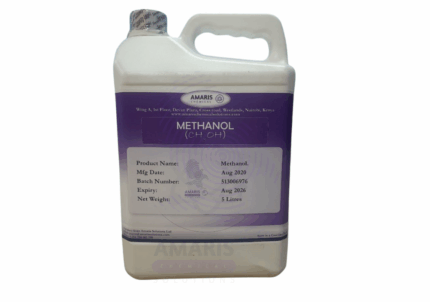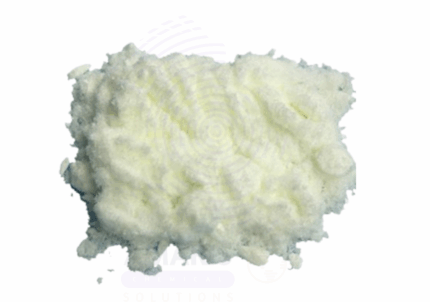
Sodium Bicarbonate Extra Pure
$ 19.45 Original price was: $ 19.45.$ 19.34Current price is: $ 19.34.
Sodium Bicarbonate Extra Pure is a high-purity, white crystalline powder known for its mild alkalinity, water solubility, and low toxicity. Commonly referred to as baking soda, it is widely used in laboratories for pH control, buffering, and neutralization, as well as in pharmaceuticals, cosmetics, and food industries as a leavening agent, antacid, and odor neutralizer. Due to its stability and safety profile, it is a versatile compound suitable for a wide range of industrial and research applications.
Sodium Bicarbonate Extra Pure
PRIMARY USES
- Analytical Reagent & Laboratory Applications:
Used as a mild alkaline buffer in titrations and pH control
• Employed in analytical chemistry for sample preparation and neutralization
• Commonly used to produce carbon dioxide in chemical experiments - Pharmaceutical & Cosmetic Industry:
Acts as an antacid in pharmaceutical formulations for neutralizing stomach acid
• Used in personal care products like toothpaste, deodorants, and skin cleansers for its mild abrasiveness and odor-neutralizing properties
• Functions as a pH adjuster and gentle exfoliant in cosmetics - Food Industry:
Widely used as a leavening agent (E500) in baking to produce carbon dioxide for dough rise
• Functions as an acidity regulator and stabilizer in various food products
• Helps reduce bitterness and enhances crispiness in certain processed foods
SECONDARY USES
- Cleaning & Detergent Industry:
Used as a deodorizer and mild abrasive in household and industrial cleaning products
• Acts as a pH buffer and water softener in detergent formulations
• Serves as a gentle scouring agent in powder cleansers - Textile Industry:
Used in dyeing processes to adjust pH and promote color fixation - Fire Safety:
Component in dry chemical fire extinguishers, especially for grease and electrical fires
1. Basic Identification Attributes
- Chemical Name: Sodium Bicarbonate
• CAS Number: 144-55-8
• HS Code: 2836.30.00
• Molecular Formula: NaHCO₃
• Synonyms:
- Baking soda
- Sodium hydrogen carbonate
- Bicarbonate of soda
2. Physical & Chemical Properties
Physical State: White crystalline powder or granules
• Color & Odor: White, odorless
• Melting Point: Decomposes at ~50 °C (releases CO₂)
• Density/Specific Gravity: Approximately 2.2 g/cm³
• Solubility:
- Soluble in water (~96 g/L at 20 °C)
- Insoluble in ethanol
• pH Level: Mildly alkaline (pH ~8.3 for 1% solution)
• Vapor Pressure & Volatility: Not volatile
• Flash Point: Not applicable
• Autoignition Temperature: Not applicable
• Viscosity: Not applicable
3. Safety & Hazard Attributes
Hazard Class (GHS Classification):
- Generally regarded as safe (GRAS)
- May cause mild eye or skin irritation
• NFPA Ratings: - Health: 1
- Flammability: 0
- Reactivity: 0
• Exposure Limits: - No specific OSHA PEL or ACGIH TLV established
• Reactivity: - Reacts with acids to release CO₂
- Decomposes when heated above 50 °C
4. Storage & Handling Attributes
Storage Conditions:
- Store in a cool, dry, and well-ventilated area
- Keep container tightly sealed
• Incompatible Materials: - Strong acids
- Moisture (hygroscopic to some extent)
• Container Type: - Plastic or polyethylene containers, sealed drums
• Shelf Life & Expiration Date: - Stable for several years if stored dry and sealed
• Special Handling Requirements: - Use gloves and goggles if handling in large amounts or dust form
- Minimize dust generation
5. Regulatory & Compliance Attributes
Regulatory Status:
- Approved as a food additive (E500)
- Recognized by FCC, USP, FDA, and EFSA
- Listed in REACH, OSHA, and EPA inventories
• Transportation Restrictions: - Not classified as hazardous for transport
• Waste Disposal Method: - Dispose in accordance with local regulations
- Non-hazardous waste classification
6. Environmental & Health Impact
Ecotoxicity:
- Low toxicity to aquatic organisms
• Persistence in Environment: - Readily neutralized and dissolved in water
• Carcinogenicity/Mutagenicity: - Not classified as carcinogenic or mutagenic
• Biodegradability: - Inorganic; not biodegradable but environmentally safe
SAFETY PRECAUTIONS
Personal Protective Equipment (PPE):
• Wear gloves when handling large quantities
• Use safety goggles to protect eyes from dust
• Wear a lab coat or apron for added safety
• Use dust mask if dust levels are high
Handling:
• Handle in a well-ventilated area
• Avoid breathing dust
• Avoid contact with eyes and skin
• Wash hands after handling
Storage:
• Store in a dry, cool, sealed container
• Keep away from acids and moisture
• Protect from humidity and temperature extremes
FIRST AID MEASURES
Inhalation:
• Move to fresh air
• Seek medical attention if irritation or difficulty breathing occurs
Skin Contact:
• Wash skin thoroughly with soap and water
• Remove contaminated clothing
• Seek medical attention if irritation persists
Eye Contact:
• Rinse eyes thoroughly with water for at least 15 minutes
• Keep eyelids open during rinsing
• Seek medical attention if irritation continues
Ingestion:
• Rinse mouth with water
• Do not induce vomiting unless advised
• Seek medical attention if large quantities are ingested
FIRE FIGHTING MEASURES
Flammability:
• Non-flammable
Extinguishing Media:
• Use appropriate media for surrounding fire
• Product itself does not burn
Hazardous Combustion Products:
• May release sodium oxide or carbon dioxide if heated to decomposition
Firefighter Protection:
• Wear SCBA and full protective equipment in case of fire


 Preservatives(food)
Preservatives(food) Flavor Enhancers
Flavor Enhancers Acidulants
Acidulants Sweeteners
Sweeteners Antioxidants
Antioxidants Colorants(food)
Colorants(food) Nutraceutical Ingredients (food)
Nutraceutical Ingredients (food) Nutrient Supplements
Nutrient Supplements Emulsifiers
Emulsifiers
 Collectors
Collectors Dust Suppressants
Dust Suppressants Explosives and Blasting Agents
Explosives and Blasting Agents Flocculants and Coagulants
Flocculants and Coagulants Frothers
Frothers Leaching Agents
Leaching Agents pH Modifiers
pH Modifiers Precious Metal Extraction Agents
Precious Metal Extraction Agents
 Antioxidants(plastic)
Antioxidants(plastic) Colorants (Pigments, Dyes)
Colorants (Pigments, Dyes) Fillers and Reinforcements
Fillers and Reinforcements Flame Retardants
Flame Retardants Monomers
Monomers Plasticizers
Plasticizers Polymerization Initiators
Polymerization Initiators Stabilizers (UV, Heat)
Stabilizers (UV, Heat)
 Antifoaming Agents
Antifoaming Agents Chelating Agents
Chelating Agents Coagulants and Flocculants
Coagulants and Flocculants Corrosion Inhibitors
Corrosion Inhibitors Disinfectants and Biocides
Disinfectants and Biocides Oxidizing Agents
Oxidizing Agents pH Adjusters
pH Adjusters Scale Inhibitors( water)
Scale Inhibitors( water)
 Antioxidants(cosmetic)
Antioxidants(cosmetic) Emollients
Emollients Fragrances and Essential Oils
Fragrances and Essential Oils Humectants
Humectants Preservatives
Preservatives Surfactants(cosmetic)
Surfactants(cosmetic) Thickeners
Thickeners UV Filters
UV Filters
 Fertilizers
Fertilizers Soil Conditioners
Soil Conditioners Plant Growth Regulators
Plant Growth Regulators Animal Feed Additives
Animal Feed Additives Biostimulants
Biostimulants Pesticides (Herbicides, Insecticides, Fungicides)
Pesticides (Herbicides, Insecticides, Fungicides)
 Active Pharmaceutical Ingredients (APIs)
Active Pharmaceutical Ingredients (APIs) Excipients
Excipients Solvents(pharmaceutical)
Solvents(pharmaceutical) Antibiotics
Antibiotics Antiseptics and Disinfectants
Antiseptics and Disinfectants Vaccine Adjuvants
Vaccine Adjuvants Nutraceutical Ingredients (pharmaceutical)
Nutraceutical Ingredients (pharmaceutical) Analgesics & Antipyretics
Analgesics & Antipyretics
 Analytical Reagents
Analytical Reagents Solvents(lab)
Solvents(lab) Chromatography Chemicals
Chromatography Chemicals Spectroscopy Reagents
Spectroscopy Reagents microbiology-and-cell-culture-reagents
microbiology-and-cell-culture-reagents Molecular Biology Reagents
Molecular Biology Reagents Biochemical Reagents
Biochemical Reagents Inorganic and Organic Standards
Inorganic and Organic Standards Laboratory Safety Chemicals
Laboratory Safety Chemicals Specialty Laboratory Chemicals(Special Laboratory Equipment)
Specialty Laboratory Chemicals(Special Laboratory Equipment)
 Demulsifiers
Demulsifiers Hydraulic Fracturing Fluids
Hydraulic Fracturing Fluids Scale Inhibitors(oil)
Scale Inhibitors(oil) Surfactants(oil)
Surfactants(oil) Drilling Fluids
Drilling Fluids
 Dyes and Pigments
Dyes and Pigments Bleaching Agents
Bleaching Agents Softening Agents
Softening Agents Finishing Agents
Finishing Agents Antistatic Agents
Antistatic Agents
 Admixtures
Admixtures Waterproofing Agents
Waterproofing Agents Sealants and Adhesives
Sealants and Adhesives Curing Compounds
Curing Compounds Concrete Repair Chemicals
Concrete Repair Chemicals Anti-Corrosion Coatings
Anti-Corrosion Coatings
 Surfactants(cleaning)
Surfactants(cleaning) Builders
Builders Enzymes
Enzymes Solvents (Cleaning)
Solvents (Cleaning) Fragrances
Fragrances
 Electronic Chemicals
Electronic Chemicals Catalysts
Catalysts Lubricants
Lubricants Photographic Chemicals
Photographic Chemicals Refrigerants
Refrigerants Automotive chemicals
Automotive chemicals Pyrotechnic Chemicals
Pyrotechnic Chemicals
 Biodegradable Surfactants
Biodegradable Surfactants Bio-based Solvents
Bio-based Solvents Renewable Polymers
Renewable Polymers Carbon Capture Chemicals
Carbon Capture Chemicals Wastewater Treatment Chemicals
Wastewater Treatment Chemicals
 Pigments
Pigments Solvents(paint)
Solvents(paint) Specialty Coatings
Specialty Coatings Binders/Resins
Binders/Resins Additives
Additives Driers
Driers Anti-Corrosion Agents
Anti-Corrosion Agents Functional Coatings
Functional Coatings Application-Specific Coatings
Application-Specific Coatings
 Fresh Herbs
Fresh Herbs Ground Spices
Ground Spices Whole Spices
Whole Spices Spice Blends
Spice Blends Dried Herbs
Dried Herbs
 Leavening Agents
Leavening Agents Dough Conditioners
Dough Conditioners Flour Treatments
Flour Treatments Fat Replacers
Fat Replacers Decoratives
Decoratives Preservatives(baking)
Preservatives(baking)
 Plasticizers & Softeners
Plasticizers & Softeners Reinforcing Agents
Reinforcing Agents Adhesion Promoters
Adhesion Promoters Vulcanizing Agents
Vulcanizing Agents Antidegradants
Antidegradants Blowing Agents
Blowing Agents Fillers & Extenders
Fillers & Extenders Accelerators & Retarders
Accelerators & Retarders